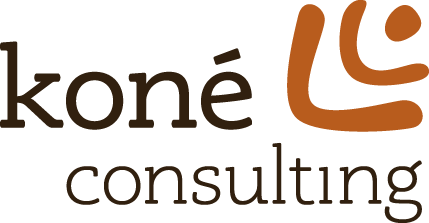Project spotlight: Pandemic EBT
COVID has blindsided schools who are now scrambling to create online curriculums or in-person learning with social distancing, after having to close early near the end of the 2019/20 school year. This created a large population of children who were no longer getting school breakfast and lunches through the National School Lunch Program (NSLP) which reduces or removes the cost of food for students. In response, Congress created, and all 50 states implemented, a program called Pandemic EBT (P-EBT) to provide a food benefit to qualifying students so they would not go hungry at home (while away from school). The Center on Budget and Priorities (CBPP) with support from the Food Research Action Center (FRAC) hired Koné Consulting, with the help of Rachel Cahill of Cahill Consulting, to research how states created and implemented such a large program in only a few months.
Map of estimated percent of a county's children approved for F/RP meals and still eligible for P-EBT.
MN Department of Human Services.
States calculated how much money to give by counting how many days of school students missed and the total benefit ranged from $250 to $450 per student. Some states quickly stood up applications that could be submitted online, over the phone or by paper and if the applicant was eligible, they would be awarded the benefit. Other states had automatic issuance, meaning no one had to apply, and the state agencies responsible for P-EBT would work with local school districts to collect student data and automatically send the benefit to any student who was eligible for the NSLP. Many states used a hybrid model and automatically issued P-EBT to families already enrolled in the Supplemental Nutrition Assistance Program (SNAP) or other benefit programs and then had an application for others. Because this program is state run, each state implemented it in a slightly different way.
We started off the project by doing a rapid assessment of several states. We interviewed SNAP and Child Nutrition directors from around the country. The most interesting thing about those initial interviews was the fact that they were in the middle of trying to implement P-EBT so we got their real time reactions. There were lots of emotions - from frustration to excitement - because of how quickly everything was happening. Next, we collected themes from those interviews and created a nationwide survey for those same directors as well as advocates. After sorting through those responses, we selected eight states for a deeper dive into really understanding the ins and outs of this program.
We did not get a complete and comprehensive assessment of P-EBT because states were still in the process of implementing the program and still had outcome measures to share with us. Some information we gathered was soon to be outdated because of how quickly things changed as well as some miscommunication between agencies. However, we did learn some important lessons that can improve implementation for the next round of this program as Congress has extended P-EBT for the 2020/21 school year. :
Lesson 1: The P-EBT program worked to provide food assistance to millions of school-aged children during a crisis, and it took impassioned and dedicated federal, state, and local staff to make it happen.
Lesson 2: Direct issuance to children was the model that worked best based on early reports.
Lesson 3: States need resources to improve the reliability of student data (how frequently it is updated) and interoperability of free/reduced price meals data and student enrollment data with their SNAP systems.
Lesson 4: Troubleshooting benefit issuance was required for some children in every implementation approach (direct issuance, application, hybrid).
Lesson 5: It was important to enhance collaboration and communication amongst P-EBT partners in state agencies, advocacy organizations, and with families.
This work was especially important to us because of who it benefits – low income children and their families who may be struggling during the pandemic. What is amazing to us is that every state and territory implementing P-EBT got money out to students to keep them fed through these unprecedented times and that is the most important lesson of all - when the world is in turmoil, people come to the support of one other.
Check out our work on CBPP’s website here or on FRAC’s webpage dedicated to P-EBT here.
-Isaac
Koné Consulting
CELEBRATING 10 YEARS INSPIRING CHANGE
AND LASTING IMPROVEMENTS
Follow us on our Facebook, Twitter and LinkdIn.

